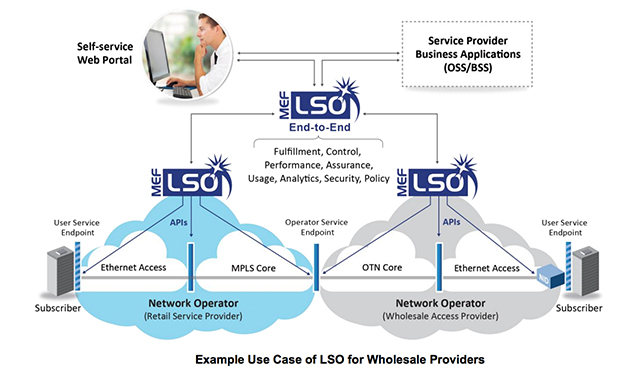By Andrew Bond-Webster
VP for Asia-Pacific, Infinera
Interfacing analogue and digital systems is a bit like mixing oil and water. But the latest integrated optical/digital chips pack all that hard work into a tiny fingertip-sized component – condensing hundreds of optical components into a single ultra-reliable microchip. Digital switch functionality plus massively scalable capacity enables a game-changing Intelligent Transport Network.
 Optical networking has no equal for long distant point-to-point transport in terms of its reliability, security, speed and, above all, potential capacity. The challenge is to find ways to exploit that speed and capacity in a way that serves the complex routing needs of a data network. According to Infonetics Research June 2013 survey, 86% of respondents are planning to use Optical Transport Network switching in the core, and by 2016 94% of those want the switching integrated with WDM interfaces.
Optical networking has no equal for long distant point-to-point transport in terms of its reliability, security, speed and, above all, potential capacity. The challenge is to find ways to exploit that speed and capacity in a way that serves the complex routing needs of a data network. According to Infonetics Research June 2013 survey, 86% of respondents are planning to use Optical Transport Network switching in the core, and by 2016 94% of those want the switching integrated with WDM interfaces.
Routing light signals on the fly would require switching decisions made faster than the speed of light – and that is assumed to be impossible. So complex switching and routing functions rely on optical to electronic signal conversion so the data can be read and processed before conversion back to optical signals for re-transmission along the intended path. This is where the delays and inefficiencies originate in what might otherwise be a near perfect networking medium.
The key to progress is to increase the efficiency of the switching process, where conventional optical components demand a lot of equipment to manage both the conversions and the routing. In a large carrier network this means racks of equipment burning a lot of electricity, taking up space and requiring costly and time-consuming manual maintenance.
THE PIC SOLUTION
If it were possible to pack all those functions into one small component, it would result in a step change in efficiency, density, flexibility and lower OpEx. This was first achieved in 2005 with the launch of the first Photonic Integrated Circuit (PIC), delivering ten 10Gbps DWDM channels between a pair of PICs. Within eighteen months of the first shipments, the solution had taken the number one market position in North America’s 10G market – a “real world” confirmation of the superiority of this approach.
Development of this technology has its precursor in the evolution of microprocessors and application-specific integrated circuits (ASICs), so that rapid progress can be made using already-proven technology. Already there are 500G DTN-X PICs, and Terabit and beyond models are on the cards. While the original version used the relatively simple IM-DD (Intensity Modulation with Direct Detection) in each channel, the subsequent explosion in bandwidth demand means that a lot of work has since been done to develop phase-based modulation with coherent detection as used widely in radio transmission. This approach is less vulnerable to signal degradation over long distances and, at 100Gbps per channel, provides a ten-fold increase in capacity but at the cost of a twenty-fold increase in the number of processing components. Such added complexity would be prohibitive, were it not for the component density and efficiency made possible in today’s integrated circuits.
The other important development is to be able to integrate a number of separate optical channels to perform as one large “super-channel” and allow much greater flexibility of bandwidth delivery. This can be likened to the difference between a number of parallel single-lane highways all travelling at the same speed versus the flexibility of a multi-lane motorway: rather than ten 10Gbps Ethernet circuits each being allocated a distinct 10G DWDM carrier, the operator has a 100G super-channel that can be dynamically shaped into any number of virtual channels and capacities to match actual client requirements. This can be achieved using ten parallel lasers each operating a maximal data rate, and again it is the compactness and efficiency of integrated circuitry that makes such complexity not only possible but also a practical solution.
A key strength of DWDM optical transmission has been its almost limitless potential capacity, but the downside has been its lack of flexibility between rigidly determined channels. The use of PICs to create super-channels transforms optical networking to enable an Intelligent Transport Network that combines the scalability of DWDM transmission with the simplicity and functionality of converged digital switching.
Just as the move to integrated circuits has made it possible to leverage developments in microprocessor technology, so has the Intelligent Transport Network gained from developments in digital networking – notably Software-Defined Networking and its use of a Control Plane that is distinct from the Data Plane. In place of time consuming manual adjustments to racks of optical equipment, today’s Intelligent Transport Network has an end-to-end carrier grade Control Plane that can automatically reconfigure the network to meet the requirements of customers and applications.
For the carrier it has changed the rules of the game – they are already building networks that scale to terabits without requiring forklift upgrades. Networking complexity, while growing in physical detail, is being effectively reduced for the operator who can now reshape the architecture with “plug and play” ease and rely on digital multilayer automation to take care of on-going operations. At the same time the carriers can enjoy the greater efficiency of converged functions, higher density, lower maintenance and reduced power consumption.
INTELLIGENT TRANSPORT NETWORK IN PRACTICE
What does this mean in “the real world”? Carrier networks require a massive investment in infrastructure, and their daily operation is too critical to allow major changes to be rolled out without a lot of careful planning. The 500Gbps super channel solution has only been around since mid 2012, but there are already 46 DTN-X customers globally, with over 1 Petabit/second of 500G super-channel capacity in service, major carriers are reporting significant benefits.
Pacnet, based in Hong King and Singapore, is a leading service provider to the enterprise and carrier markets, serving an APAC market that includes many of the world’s fastest growing economies, populations and broadband internet demands. Pacnet owns and operates a pan-Asian submarine cable network with 19 cable landing stations, and points of presence from India to the USA.
In one of the largest regional deployment of 100 Gbps technology to date, Infinera helped Pacnet build out their new optical network infrastructure based on 500Gbps super-channels within nine weeks. Their Intelligent Transport Network incorporates a new standards-based resiliency technique for networks to recover from failures without the need to dedicate backup bandwidth for each active circuit. A purpose-built hardware acceleration chip included in DTN-X means that customers can now survive multiple fibre cuts with less than 50ms recovery – a vital assurance in subsea networks in a hostile environment where it is not easy to access the cable for repair and maintenance.
In addition to space and cost savings from the compact solution, consuming up to 50% less power, cable-landing stations has been simplified with fewer failure points for easier maintenance and troubleshooting. Most important in a business environment where customers want more speed and capacity at lower cost and on demand, Pacnet can now provision services rapidly between any two terrestrial locations, even across a long reach subsea network, and circuits can be reconfigured in seconds while maintaining maximum capacity and flexibility.
According to Pacnet CTO, Andy Lumsden, the solution “greatly advances our Layer 3 to Optical convergence” and gives Pacnet “a clear advantage in offering fully protected services and restoration capability for our customers.”
Telstra Global is another company upgrading long-haul submarine cable networks, in this case across North Asia, Hawaii to California and Sydney to Hawaii routes. Darrin Webb, Chief Operating Officer for Telstra Global says: “Demand for network services in the Asia Pacific region is growing exponentially and the addition of Infinera’s DTN-X platform means we will be well placed to meet the speed and capacity needs of our customers.” Now able to deploy highly reliable, differentiated services while reducing costs through scale, multi-layer convergence and automation, Telstra Global is another great example of how long-haul super-channels are benefitting global business and linking distant communities.
IDEAL FOR THE APAC MARKET
According to James Walker, President, CloudEthernet Forum, the APAC region faces a special challenge for cloud services, because the datacentres are so far apart. Whereas datacentres in the USA, and especially in Europe, are likely to be fairly close: “typically in Asia they’re in Hong Kong and Singapore, or Tokyo and Hong Kong, or Sydney. In other words, they are widely separated and this has a wide-ranging impact on how people design their network and datacentre environments – which then has a knock-on effect across the entire globe.”
Managing network capacity becomes extra critical across these greater distances, and reliability and efficiency are vital for submarine cabling. Not surprisingly, APAC carriers are showing a lot of interest in the flexibility and easier management available across today’s high capacity super channel networks.










































































































